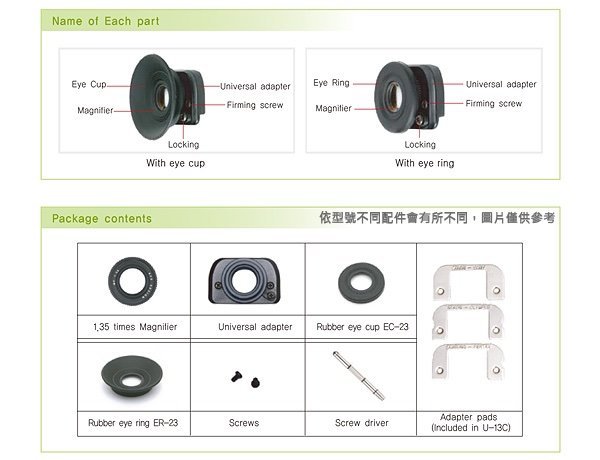-
Posts
580 -
Joined
-
Last visited
Everything posted by Joerg Polzfusz
-
You might also want to take a look onto the first three photos of this Japanese webpage: https://web.archive.org/web/20160324090835/http://www.nakanocam.com/8mm_page/8mmcartridgeandr.html
-
Hi! Use some white leader (at least 5m) to test reloading in light. The leader will try to unwind itself like the real film. ? When you can load the cart in less than 5min in light, then you will still need at least(!) 15min in darkness for your first carts. And with your first attempts, you will probably end up with the perforation on the wrong side or with the film base on the wrong side (the emulsion has to be closer to the lens than the base). ? You can normally load 12m of acetate based film into a single8-cart. One exception is the Fomapan R100 as it‘s stiffer: When you load more than 10m, the film might jam. The wheels/cores inside the cartridge each have a small spike to attach the film. (I simply punched 2-3 overlapping holes into the film with one of those adjustable punches for leather belts. This is good enough to attach the film to the spike.) Alternative approach: Use double sided scotch tape to glue the film onto the wheels. But ensure to remove the tape before processing the film. Keep in mind that the film is following a different path in the cartridge than the tape in a MC. (But it’s engraved onto the cartridge.) To open the cartridge, simply follow the gap between the two outer parts with a small, sharp knife (e.g. Swiss Army knife) with very little pressure. This is usually enough to crack the cartridge open (as Fuji luckily used a minimum amount of glue). Later use scotch tape to keep it closed. But don’t use any thick tape like gaffer tape. Otherwise the cartridge might not fit into the camera anymore. Keep in mind that the camera will later read the cartridge‘s arc or holes/dimples to detect the film‘s sensitivity. So either modify this or use matching cartridges or use manual exposure. That‘s pretty much it. Good luck!
-
Hi! All LEDs are emitting visible wavelengths. And the lightmeters are reading visible wavelengths, too. Hence, I don’t see any problems. (The lightmeters also don’t become inaccurate when you put colored gels in front of your halogen lamps - unless you are using orthochromatic films, infrared films/cameras or sensors that don’t react to certain colors.) However, due to the spike in the blue wavelengths in many products, LEDs might have an impact on the color temperatures. But you would have to check this with a color meter.
-
Yes, you’re right. Sorry, my mistake. I’ve last used my Nautica in the year 1 or 2 BC (before Covid-19) and I use too many different cameras. ? However, the camera knows when you have enabled the filter and automatically takes it into account for the auto-exposure. (Sorry, I have only got a German service manual.)
-
The camera simply assumes that all used films are 40 or 160 ASA Tungsten. It only differs between these two types. The camera doesn’t really know 25 and 100 ASA. These two values are only the effect of „Tungsten balanced films with enabled color correction filter“ (aka: the user has moved the orange switch to sun = the user has enabled the filter = there are 2/3 f-stops of light that don’t reach the film any more). But as the camera is using TTL lightmetering, it would automatically correctly compensate for all kinds of filters . When using daylight balanced films in this camera, e.g. Vision3 50D or E100D, then the filter switch has to be set to „bulb“ (filter disabled) unless you want to pretend that you have filmed something on Mars. (As the camera‘s film sensitivity detector is rather simple, the V50D will be exposed at an okay 40ASA, while the E100D will be heavily overexposed at 160ASA.) For b&w films like the Tri-X, it‘s best to set the switch to „bulb“ - unless you want to use the color correction filter as an orange filter (e.g. for portraits or for increased contrast when shooting landscapes or buildings). Even though the Tri-X is officially rated as 200ASA, Kodak has notched it as 160ASA. That’s because of the Super8-standard that doesn’t define any notches for 200ASA. However, the Tri-X is working fine when exposed as 160ASA.
-

Hand Processing Flicker Query
Joerg Polzfusz replied to Christian Flemm's topic in Film Stocks & Processing
I assume that the chemicals didn’t properly came in contact with the film all the time: not enough agitation, not enough chemicals (especially in combination with too much agitation and hence effects of the centrifugal force), film stuck on other parts of the film, …. But I am not an expert in this. -

Logmar working on new 15 perf 65mm film camera
Joerg Polzfusz replied to John Shell's topic in General Discussion
Did Logmar ever produce fully working cameras at all? Their first S8-camera only exists as prototypes (with non-working xlr-mic-connectors on all cameras, random or permanent problems with sound-recordings on various specimens,…). Their second S8-camera also only exists as prototypes (okay, this might have been Kodak’s fault and not Logmar‘s). And their third S8-camera simply got canceled a few weeks after the announcement… -

How much exposure would I gain with a 220 degree shutter?
Joerg Polzfusz replied to Stephen Gordon's topic in Super-8
When 18fps is fine, you could also look out for a Canon 310xl (the non-af-version): f1.0 lens, 220° shutter, … https://global.canon/en/c-museum/product/cine291.html Pros: It’s very compact and light. And there’s an optional wide-angle adapter. It turns the camera into a „focus free“ system which is great for events with a lot of spontaneous action. Cons: This camera cannot be set to 24fps and its auto-exposure doesn’t support the Vision3 500T! -

How much exposure would I gain with a 220 degree shutter?
Joerg Polzfusz replied to Stephen Gordon's topic in Super-8
TriX can be pushed and pulled. But I never tried it myself. I have heard that this will have an impact on the grain and the contrast. But I forgot the details. There is also an alternative approach, but it‘s a DIY approach and hence might not be suited for paid jobs: https://www.filmkorn.org/lightening-up-too-dark-blackwhite-reversal-films/?lang=en -

How much exposure would I gain with a 220 degree shutter?
Joerg Polzfusz replied to Stephen Gordon's topic in Super-8
Hi! There are a few things that you should keep in mind: * You can replace the Beaulieu‘s lens and use a lens with an f-stop of 0.9, 1.0, 1.2 or 1.4 instead of „only“ 1.8. * In most cameras, the TriX will be recognized as only 160ASA instead of its box speed (200ASA). That’s because of Kodak’s strange design of the cartridge notches and because many cameras can only differ between 40 and 160ASA. This is especially true for XL-cameras. * Some cameras will accidentally activate the internal Wratten 85 filter. This will only reduce the amount of light that reaches the film. But it is completely useless as the Wratten 85 is only meant for tungsten balanced color films. (For B&W, it will act as an orange filter.) You might be able to manually deactivate it. And you should check whether you have deactivated it on your Beaulieu. * Most S8-cameras have a „permanent“, „non-flickering“ viewfinder. This means that it features a semi-transparent mirror that is permanently in place and is permanently causing a loss of 0.5 to 1.5 f-stops (depending on the camera) by redirecting a fraction of the light to the viewfinder. In other words: Simply switching to XL cameras might not improve the situation. What about using Vision3 500T? (Disadvantages: very large grain and not all cameras support 500 ASA.) -
The reason is that Canon changed the design and other features between the different cameras with „814“ in the name: https://global.canon/en/c-museum/camera.html?s=cine&s2=8mmcam One main difference between the 814XL-S and the other models named 814 is that the 814XL-S could record sound on the magnetic soundtracks (if their still is a company offering pre-striped S8-Films in the larger sound carts). Due to the additional weight caused by the sound recording parts, the need for a better handle is obvious. (Whether the 814XL-S' handle really is better is heavily debated ever since the camera’s release. ?) BTW: There are many S8 cameras where the batteries are stored inside the body instead of inside the handle. But this didn’t prevent them from having problems caused by leaking batteries that caused corrosion of nearby cables. Not to mention that is majorly of cameras is 50 years old … In other words: It’s better to check the individual camera than to condemn whole models/brands.
-
BTW: DaVinci should have three different stabilization modes and sliders for smoothness and strength of the effect. Did you already played with different settings?
-
Hi! VirtualDub and its Deshaker plug-in are both „Windows only“. But there’s an older version of Mercalli for Mac (the demo adds a watermark, but you could at least see for free whether it solves the problem): https://www.prodad.com/Video-Stabilization-for-Professionals/Mercalli-SAL-Mac-48950,l-us.html Adobe AfterEffects are also available for the Mac. And there’s also a free trial: https://www.adobe.com/products/aftereffects/free-trial-download.html
-
Hi! You can try VirtualDub with the Deshaker plug-in (both available for free): http://www.guthspot.se/video/deshaker.htm Or proDad Mercalli: https://www.prodad.com/Video-Stabilization-for-Professionals/Mercalli-V6-SAL-Windows-97864,l-us.html Or the „warp stabilizer“ that is included in Adobe AfterEffects.
-
Hi! Did anyone played around with tools like this that use AI to remove background noise, echoes etc. from voice recordings? https://podcast.adobe.com/enhance
-
Some sources for new and used 35mm rewinds: https://van-eck.net/en/product/van_eck_rewinder_35mm_films_rw-600_m-35-2/ https://urbanskifilm.com/supplies.html Of course, you can also find them from time to time on eBay, …
-
Hi! There are adapters for using smaller formats on rewinds for larger formats (e.g. https://van-eck.net/en/product/adapter_kit_-9_pcs-_for_16mm_rewinders/ or https://www.thingiverse.com/thing:6173760 ). But AFAIK there’s no adapter for the other way round - simply because the larger format is heavier and usually needs much larger reels. Good luck! Jörg
-
https://manage.kmail-lists.com/subscriptions/web-view?a=HHTxWc&c=VjWYSU&k=a0a0581cbc6bc08c8fcfa2ae14e6fd6e&m=01H8PTZBHP3ND7MQS67VTZWYKH&r=34RMDUPa
-
https://www.infinitioptics.com/about Could it be made/distributed by the above company? Or by the below company? https://www.infinity-usa.com/
-
And a Korean(?) magnifier: https://www.fotocasion.es/catalogo/ocular-seculine-u-13c-universal-magnifying-eyepiece/45600/ But it looks like it also doesn’t come with an proper adapter for your camera. ?
-
Another generic magnifier (most likely also from Seagull, but at least also from China): https://www.ebay.de/itm/354379483629






